Knox Stories
In Memoriam: Thomas Eugene Kurtz ’50
His time at Knox laid the foundation for a lifetime of contributions to education and technology.
Venture Boldly

Office of Communications
2 East South Street
Galesburg, IL 61401
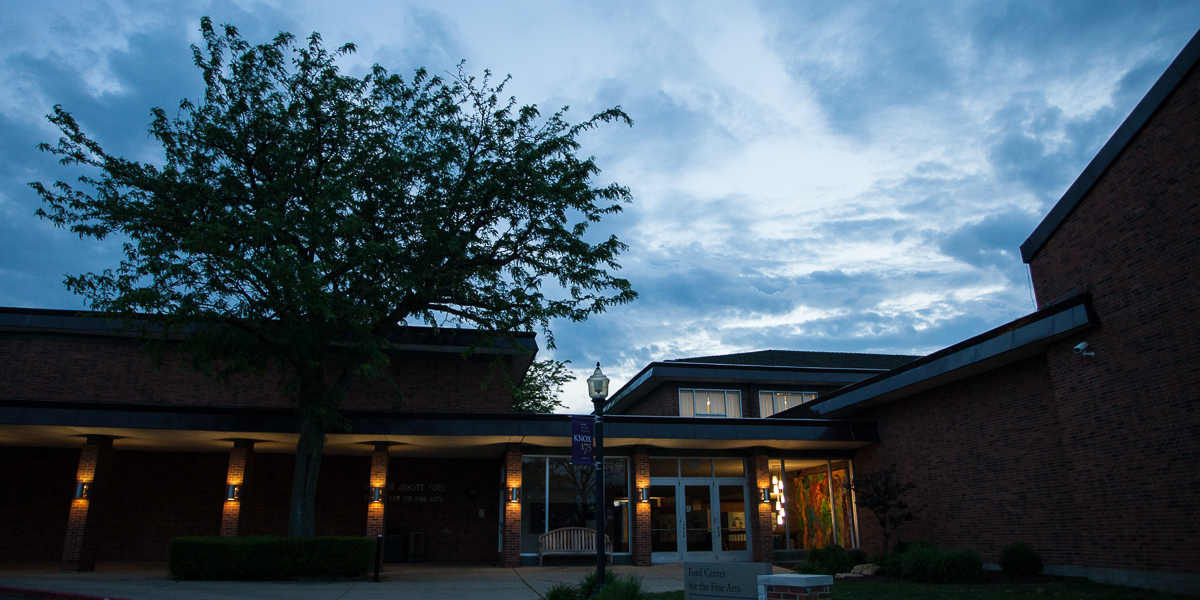
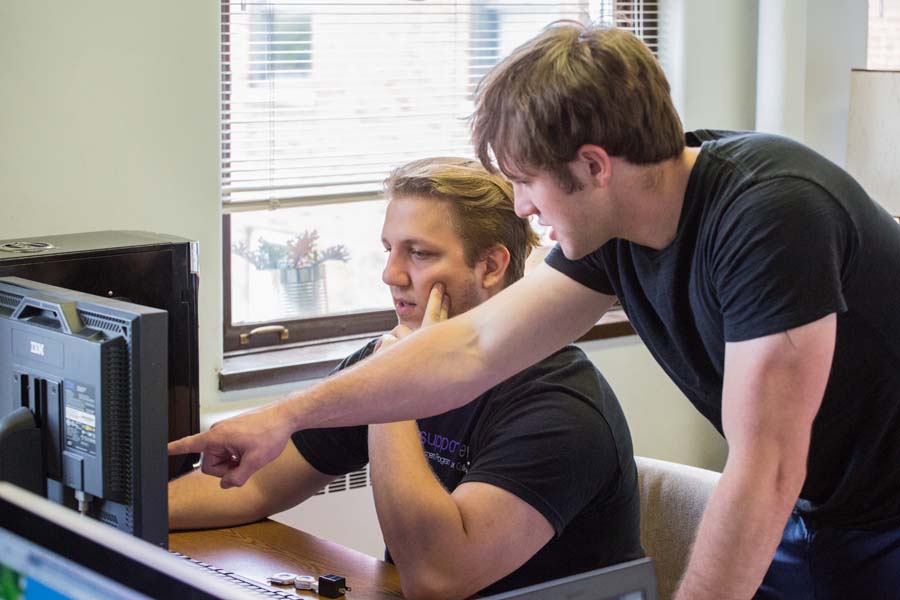
"Just one more minute."
According to Knox College student Michael Gerten, that's all his programming team would have needed, to solve the fourth of nine computer programming problems within the 300-minute time limit at the annual Association for Computing Machinery (ACM) Intercollegiate Programming Contest, held this fall at sites around the world.
But time ran out for Gerten and teammates Ben Stanger and Andrew Richter, who solved three of nine. They placed 17th among 28 teams at the sub-regional site at University of Illinois-Springfield (UIS), where Knox competed on November 7.
Gerten's team was one of five three-person squads that Knox fielded this year, which ties for the biggest contingent in the 14 years that Knox has been participating in the competition.
At the same time, Knox is the smallest school to place a team in the top 30 at this year's Mid-Central Regional, which encompasses more than 150 teams from 50 colleges and universities in Illinois, Missouri, Kentucky, Tennessee, and Arkansas. The finals are scheduled for May 2016 in Thailand.
To give an idea of the difficulty: None of the teams in the Mid-Central Region solved all nine problems in allotted five-hours, which makes three of nine a strong showing, according to Jaime Spacco, associate professor of computer science.
"This year marked the first time that all of our teams solved at least three of the problems, with one Knox team solving one additional problem for a total of four, which was good for 6th at their site and 29th in the Mid-Central Region," said Spacco, one of three faculty coaches, along with David Bunde, associate professor of computer science, and John Dooley, William & Marilyn Ingersoll Professor of Computer Science.
Knox students practice with their teams and faculty coaches for about eight weeks, several times a week in after-class sessions.
"We give students tips on how to approach the entire set of problems," Dooley says. "Because your score is based first on the number of problems you solve, and second on your overall time, being able to find the easiest problems quickly is crucial. We also talk about division of labor within the team."
Gerten, who also took part in the ACM competition in 2014, said he was able to apply some of the training techniques to other projects, especially the advantages to working in a team.
"One person can be figuring out the next problem while someone else is coding the previous problem," Gerten says.
"Also, at the competition, you only have one computer between the three of you. It encourages you to use pair programming, which is two people looking at the screen at the same time. It really helps reduce errors.
"Cody (Sehl, one of Gerten's teammates in StartUp Term) and I did that throughout our project in StartUp Term. Our code might not have gotten assembled that fast, but it had very few problems," Gerten said.
"That's been shown throughout my education at Knox - when I work with someone, the quality of my product is much higher than if I had worked alone."
Photo above, two students confer on their project in StartUp Term; below, computer science professor David Bunde works with student Hai-Le Son. More views of Computer Science at Knox on Flickr: In classes and research; in the StartUp Term interdisciplinary immersion program that simulates a high-tech business incubator; in the annual sumo robot wrestling meet.
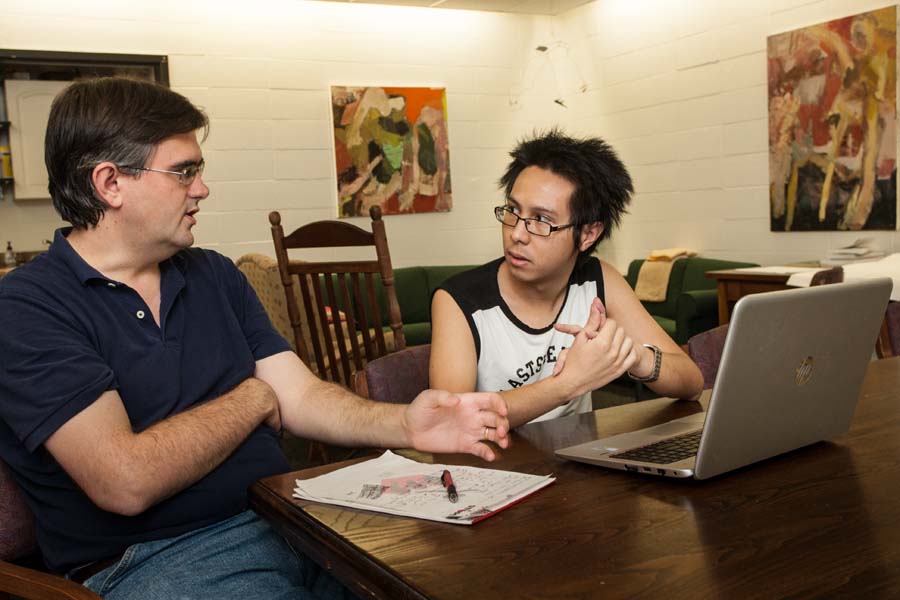
Knox College team results from the ACM 2015 Intercollegiate Programming Contest (Nov. 7 at UIS):
Published on December 02, 2015
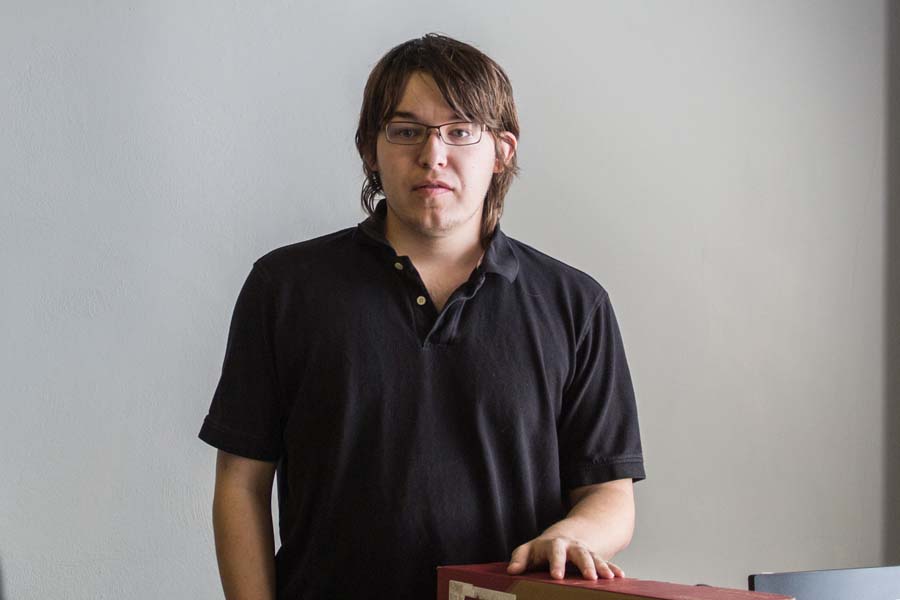
 It's been shown throughout my education at Knox - when I work with someone, the quality of my product is much higher: Michael Gerten
It's been shown throughout my education at Knox - when I work with someone, the quality of my product is much higher: Michael Gerten
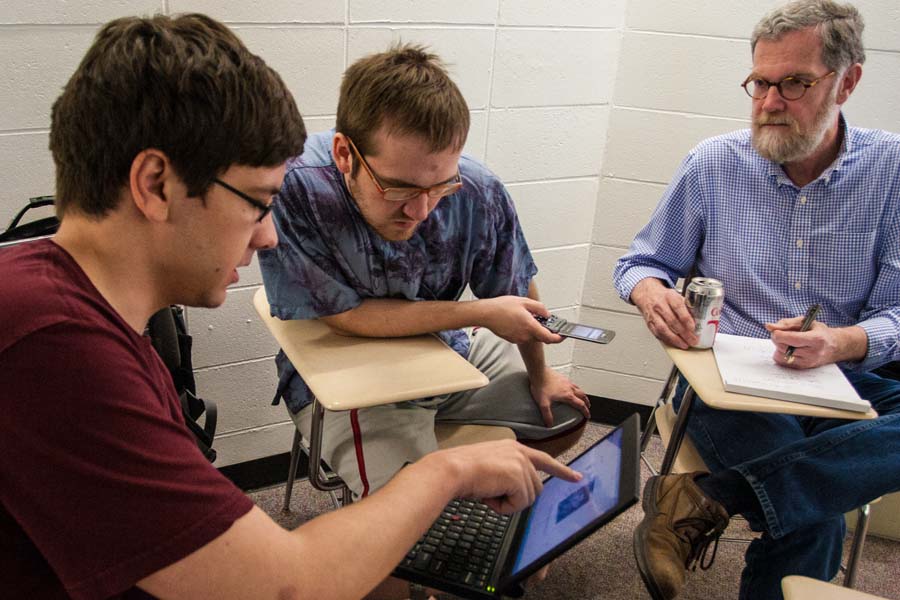
 Pair programming - two people looking at the screen at the same time - really helps reduce errors
Pair programming - two people looking at the screen at the same time - really helps reduce errors